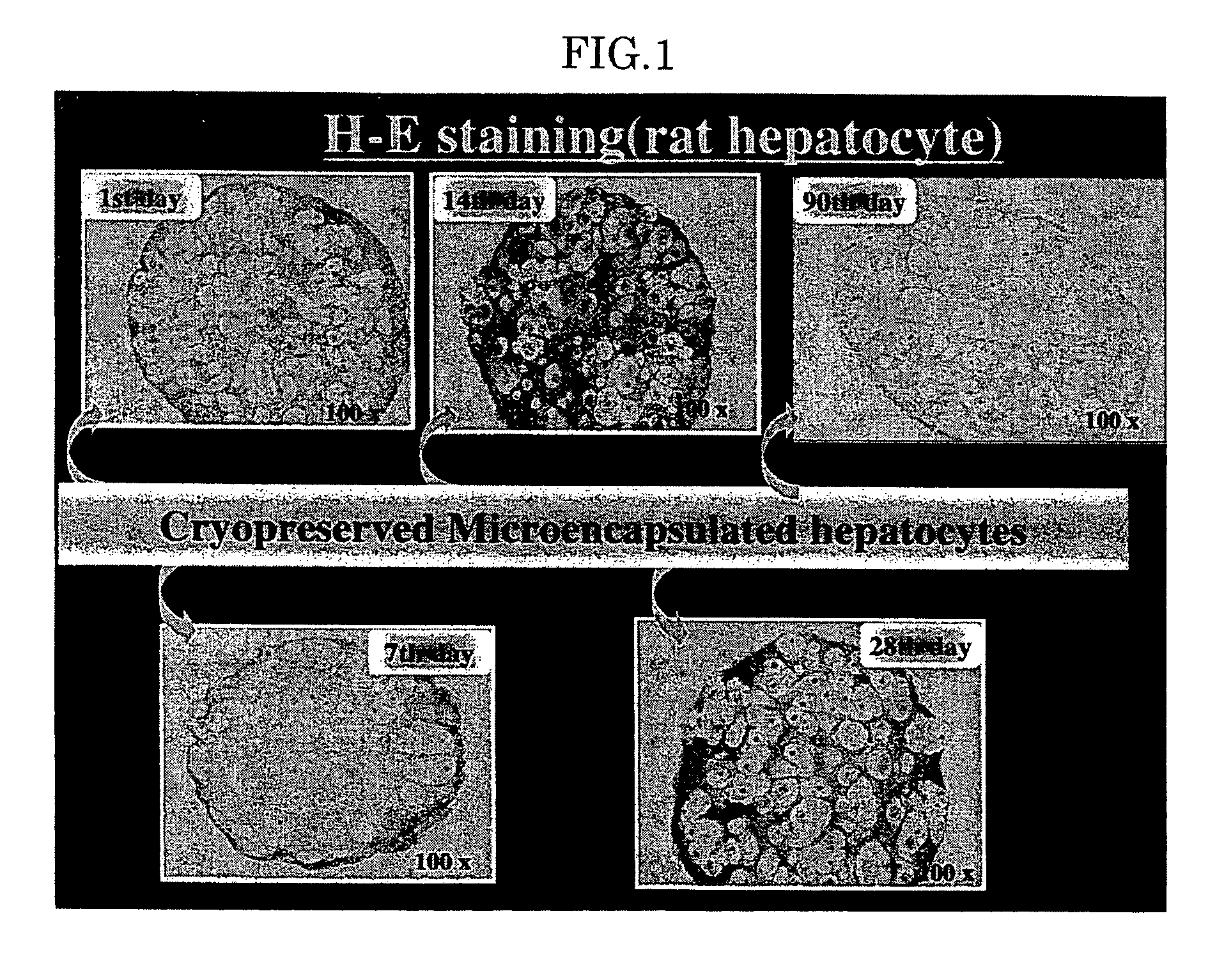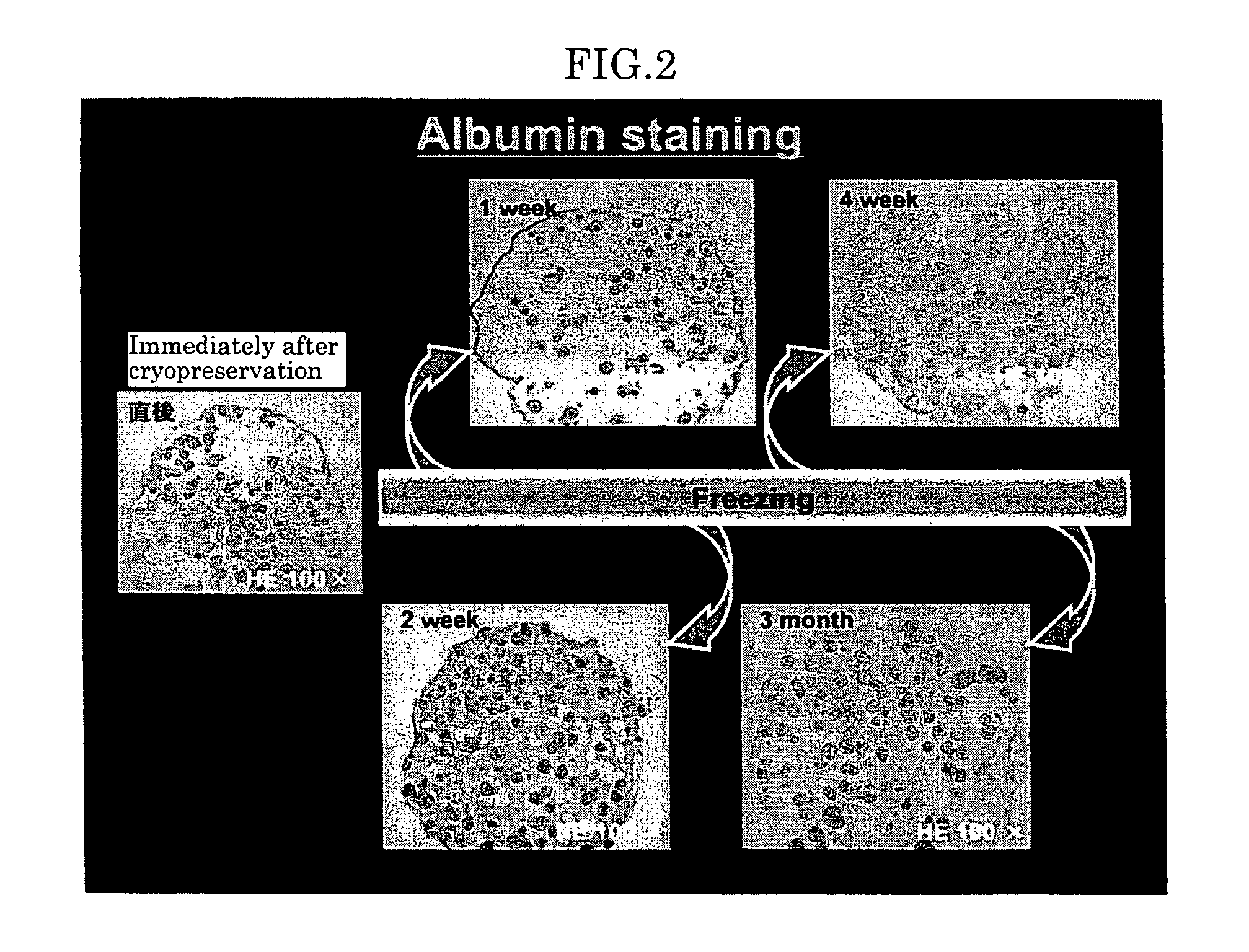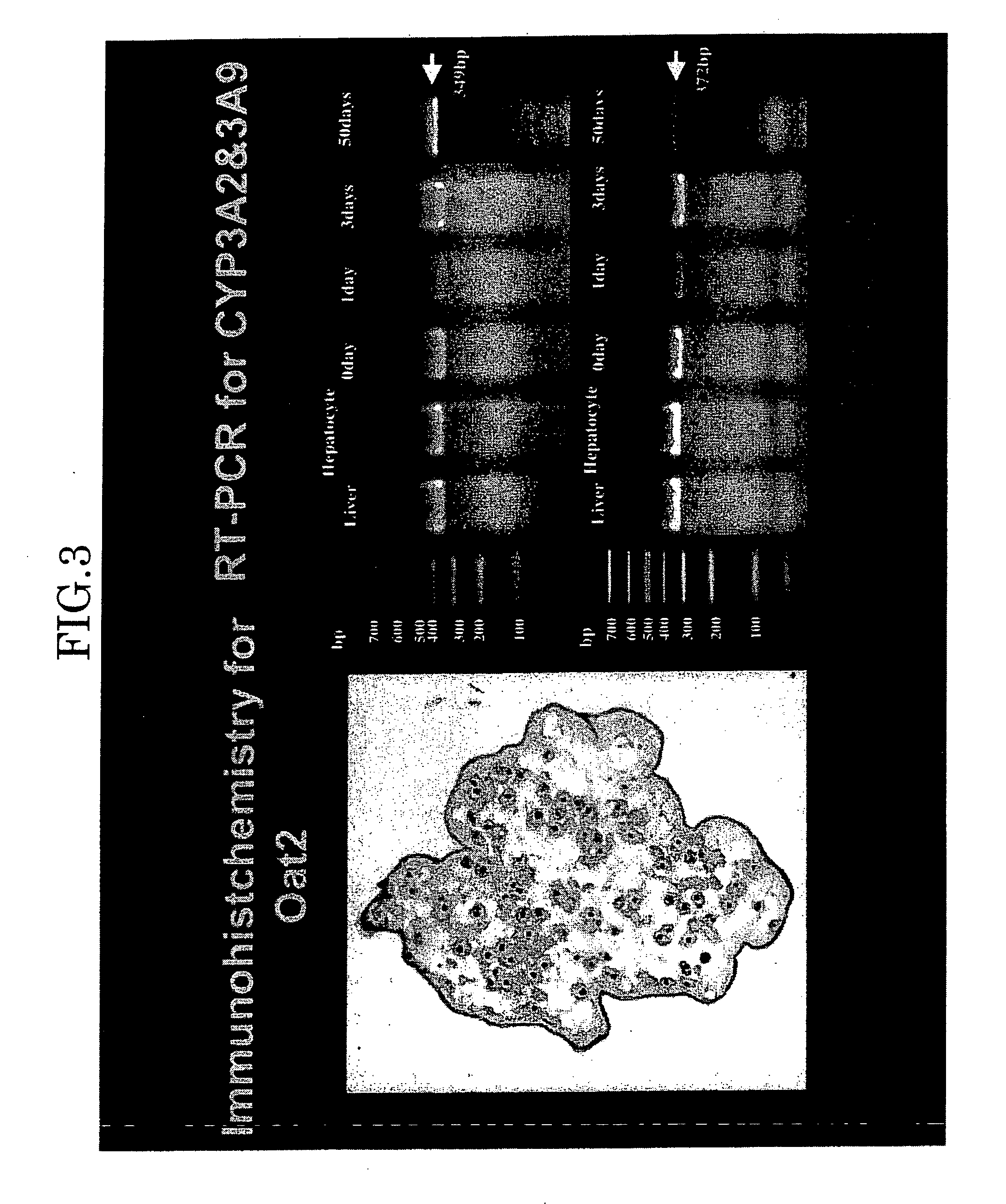Method for cryopreserving microencapsulated living animal cells enclosed in immunoisolation membranes, such microencapsulated living animal cells in immunoisolation membranes, and biohybrid artificial organ modules using such microencapsulated living animal cells in immunoisolation membranes
- Summary
- Abstract
- Description
- Claims
- Application Information
AI Technical Summary
Benefits of technology
Problems solved by technology
Method used
Image
Examples
experiment 1
[0060] (Experiment 1)
[0061] The hepatocytes were microencapsulated by the alginate / poly-L-lysine method, and then suspended in DMEM containing 10% fatal bovine serum (FBS) and 10% dimethylsulfoxide. The suspension was immediately placed in liquid nitrogen and cryopreserved. The cryopreserved hepatocyte microcapsules in the immunoisolation membrane were unfrozen with the lapse of time in a water bath at 37° C., and histogenetic evaluations (Hematoxylin & Eosin (H-E), PAS (Periodic Acid Schiff Staining) albumin (ALB) and drug-metabolizing capacity (cytochrome P450IIIA2, 9) were examined for them. The microencapsulated rat hepatocytes were unfrozen 1st day, 7th day, 14th day, 28th day and 90th day after beginning the cryopreservation, and their cell activity was examined. They exhibited “positive” for ALB and PAS, and expression of OAT2 and CYP450III1A2 and 9 was observed. It was also revealed that the cryopreserved microencapsulated rat hepatocytes maintained viability.
[0062]FIG. 1 s...
experiment 2
[0063] (Experiment 2)
[0064] The function of the rat hepatocytes in the immunoisolation membranes was histogentically evaluated with respect to specific hepatocyte-metabolizing capacity (albumin synthesis ability and urine nitrogen synthesis ability, H-E, PAS, ALB).
[0065] The immunoisolation membrane-enclosed cells cryopreserved for one week were unfrozen in water bath at 37° C., and cultured for one week. FIG. 4 shows results on this culturing. FIG. 4 shows H-E staining test results in an upper portion and albumin staining test results in an lower portion (1st day, 3rd day and 7th day from the left), revealing that the cryopreserved capsules maintained the metabolizing function peculiar to the liver even after one-week cultivation.
[0066]FIG. 5 shows results in observing synthesized amounts of urea during culturing, which demonstrates that the cryopreserved rat cells in the immunoisolation membranes exhibited higher urea synthesis and cell activity (an upper polygonal line in FIG. ...
experiment 3
[0067] (Experiment 3)
[0068] The cryopreserved hepatocytes in the immunoisolation membranes originated from the primary human hepatocytes obtained in the same manner as in Experiment 1 were unfrozen in water bath at 37° C. The function of the rat hepatocytes in the immunoisolation membranes was histogentically evaluated with respect to specific hepatocyte-metabolizing capacity (albumin synthesis ability and urine nitrogen synthesis ability, H-E, PAS, ALB). It was examined whether the cryopreserved hepatocytes in the immunoisolation membranes functioned normally or not.
[0069]FIG. 6 gives photographs obtained by observing with a phase microscope, preparations in which unfrozen human hepatocytes in an immunoisolation membrane was treated with formalin and fixed with paraffin, which shows that the shape of the human hepatocytes in the immunoisolation membrane did not change by freezing, unfreezing and culturing. FIG. 7 gives photographs in H-E staining results of human hepatocytes in an...
PUM
 Login to View More
Login to View More Abstract
Description
Claims
Application Information
 Login to View More
Login to View More - R&D
- Intellectual Property
- Life Sciences
- Materials
- Tech Scout
- Unparalleled Data Quality
- Higher Quality Content
- 60% Fewer Hallucinations
Browse by: Latest US Patents, China's latest patents, Technical Efficacy Thesaurus, Application Domain, Technology Topic, Popular Technical Reports.
© 2025 PatSnap. All rights reserved.Legal|Privacy policy|Modern Slavery Act Transparency Statement|Sitemap|About US| Contact US: help@patsnap.com



